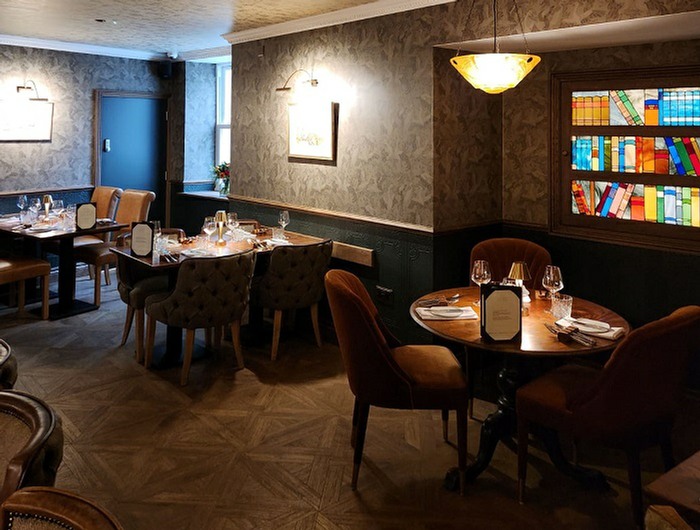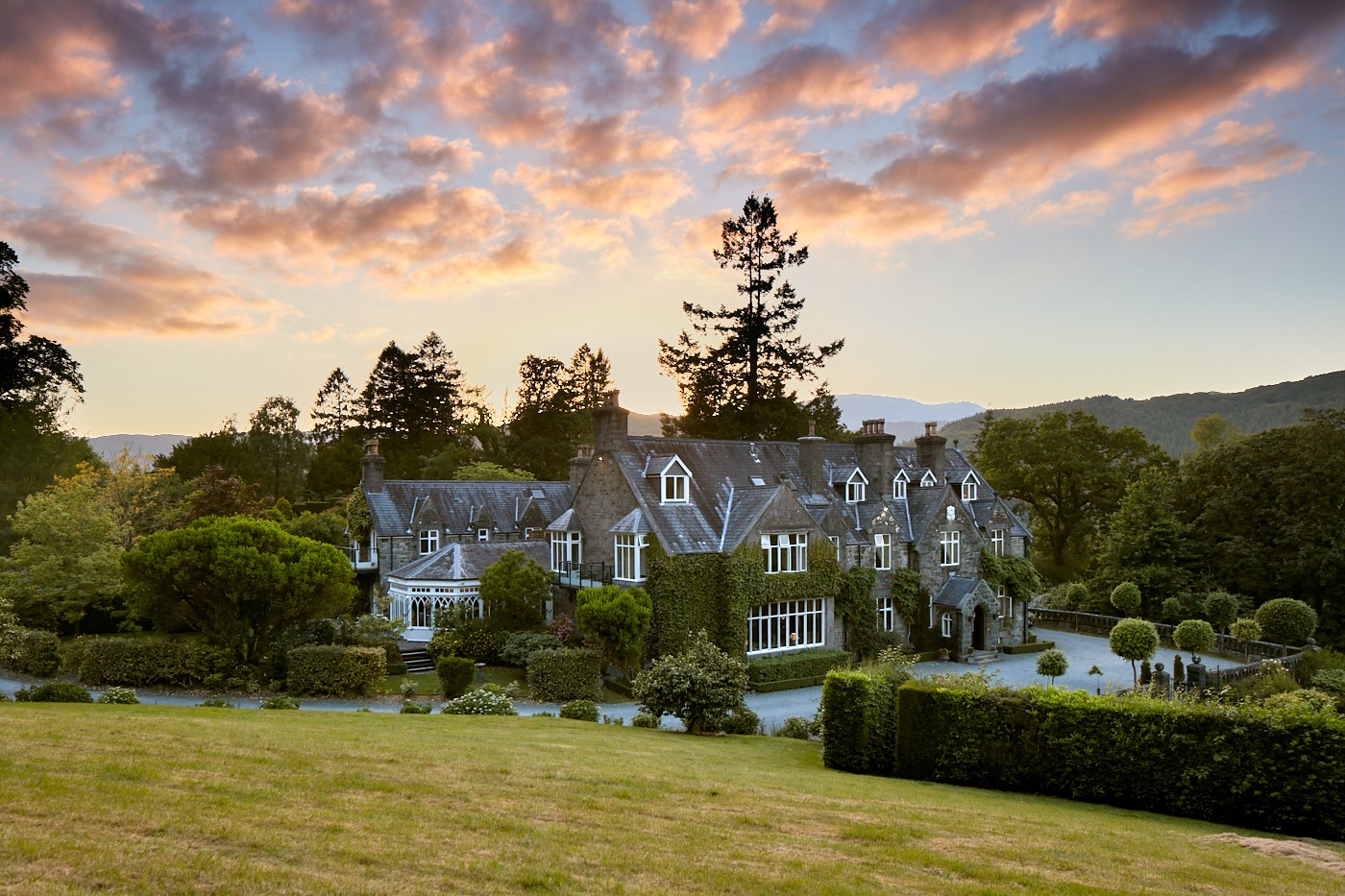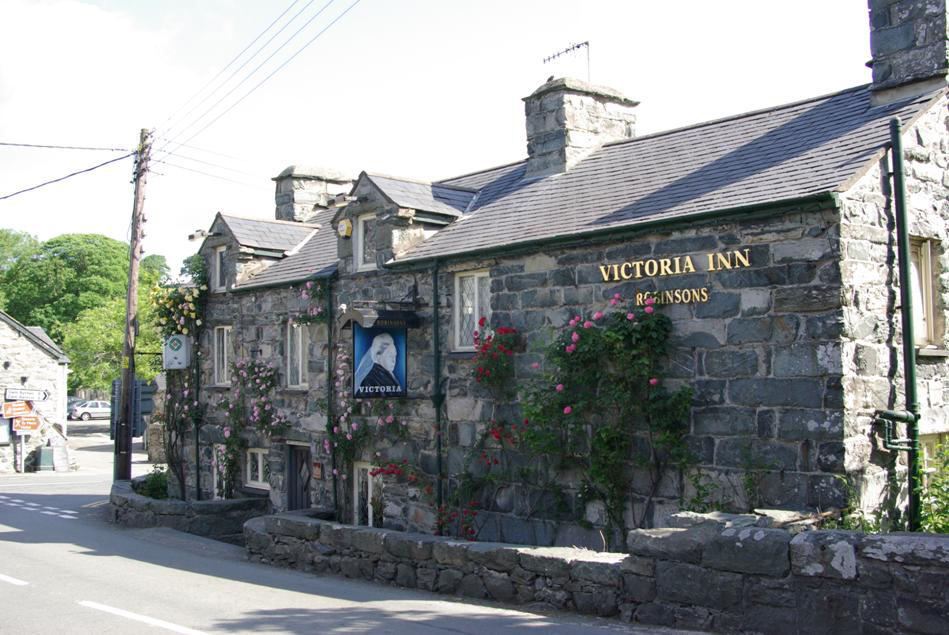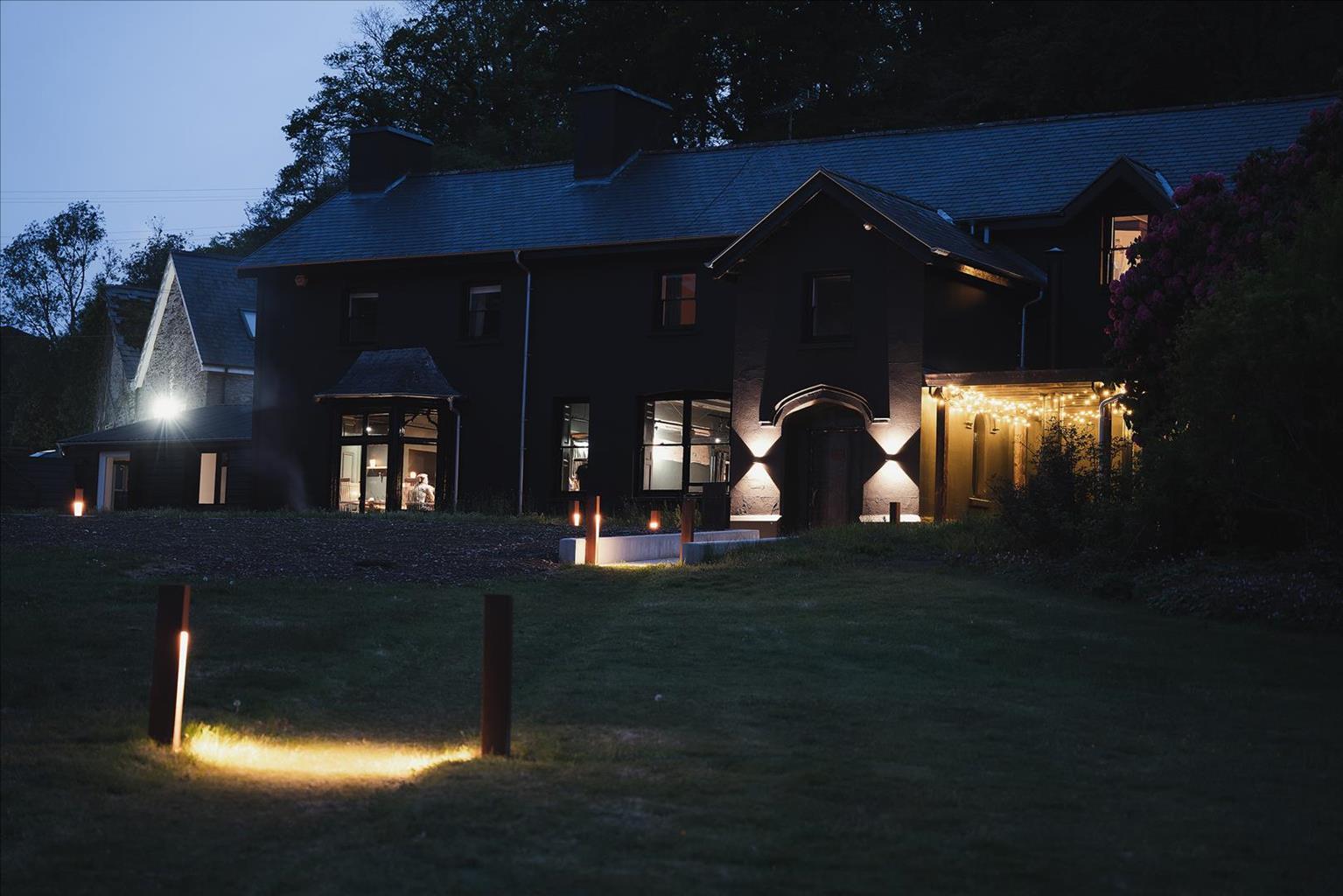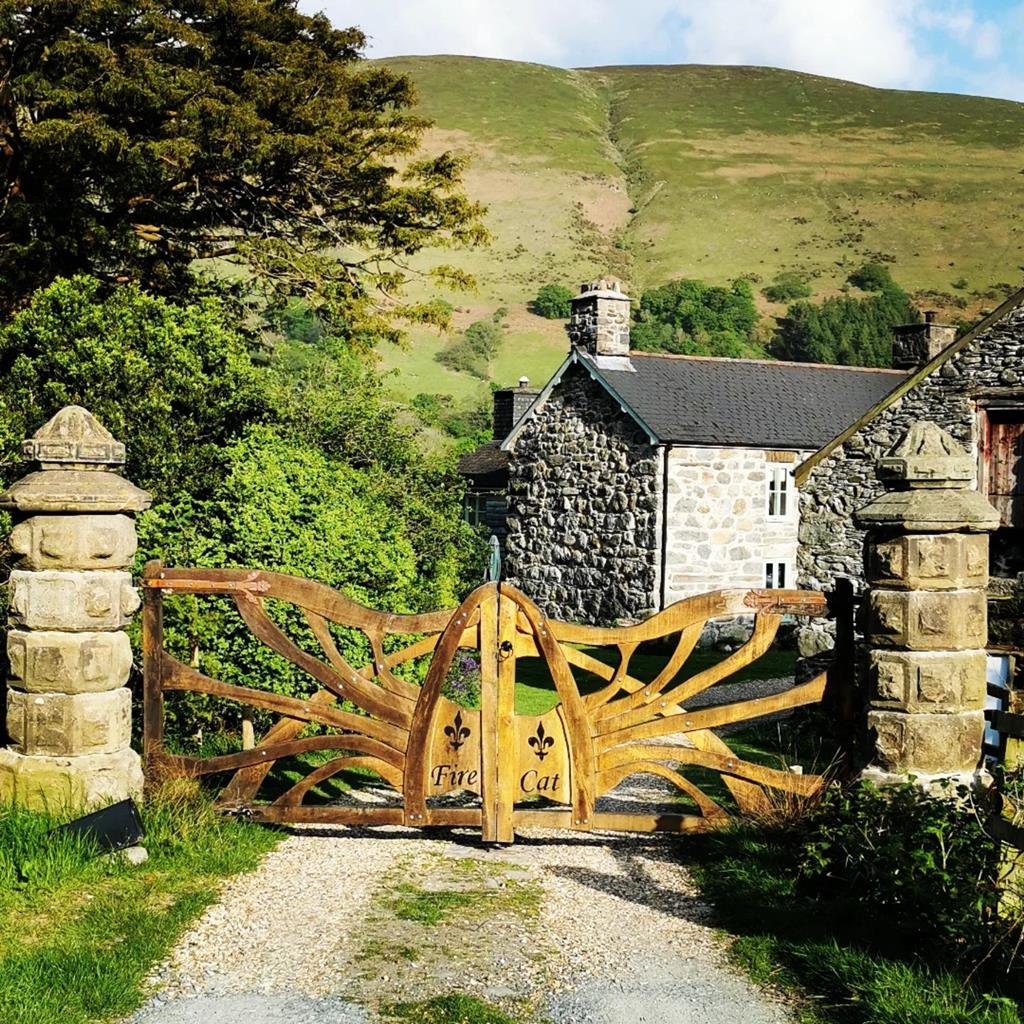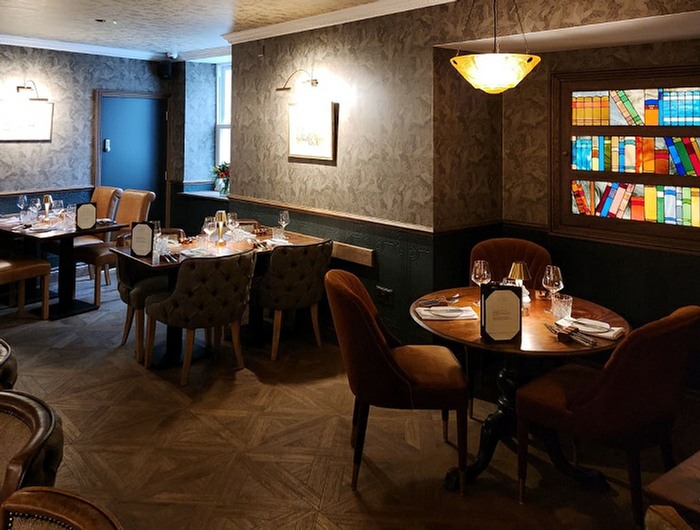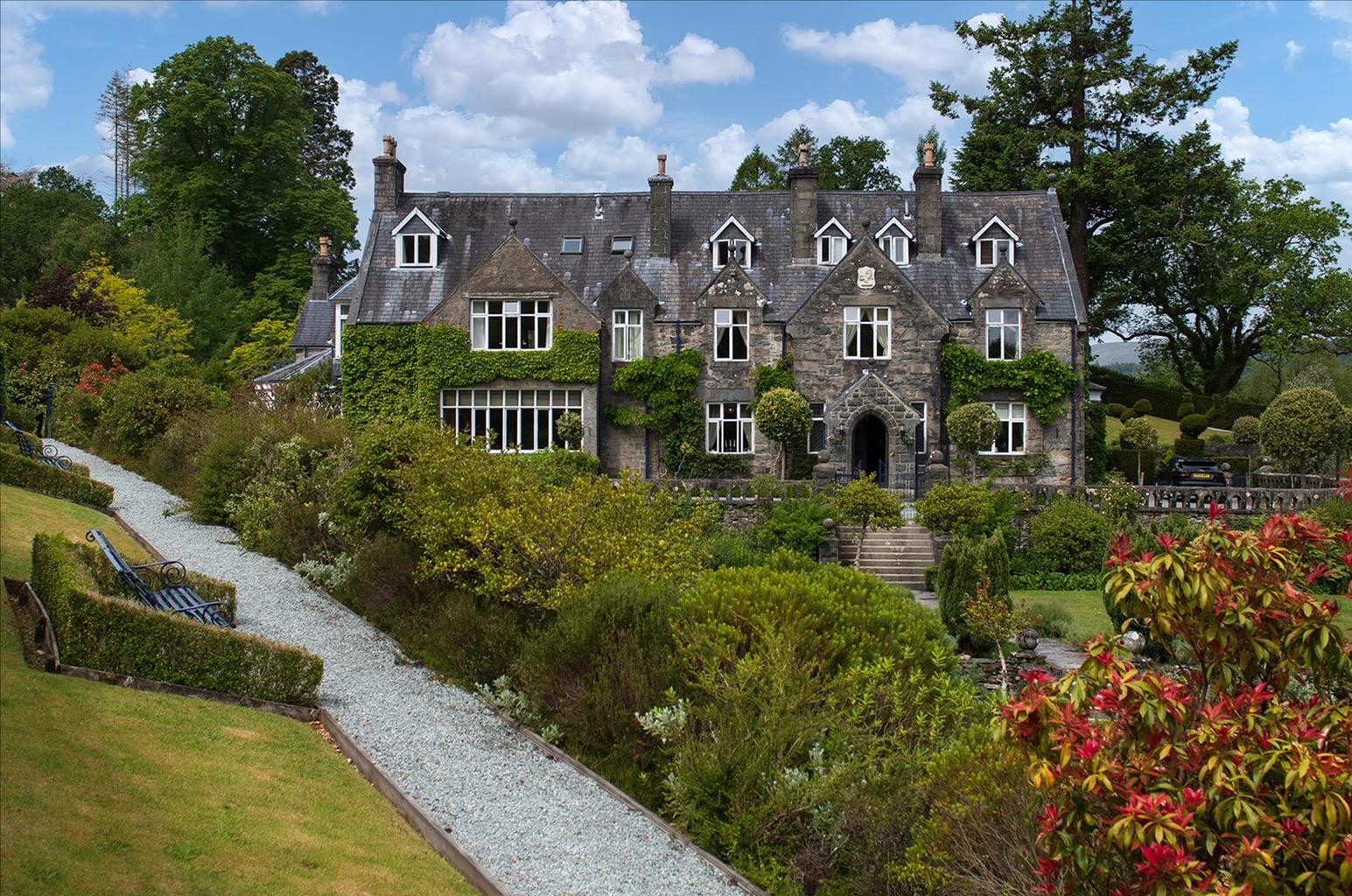First impressions at the Fanny Talbot might suggest a mere seaside resort pub, but this recently…
Arthog and the Mawddach Estuary

Along the Arthog Falls to Cregennen Lakes, returning along the Mawddach estuary
8.5 miles (13.5kms)
About the walk
Arthog today is a peaceful village on the shores of the Mawddach, but in the late 19th century, a developer from Cardiff, Solomon Andrews, had ambitious plans to build a bustling holiday resort on the estuary. His scheme was foiled by the underlying bogginess of the ground. Only two rows of houses were ever completed, and the end of one, Mawddach Crescent, swiftly sank into the mud. With costs piling up, Andrews withdrew his investment, leaving the estuary and its wildlife in peace.
After a riverside climb through attractive broadleaved woodland, you will emerge onto the open mountain by a beautiful clapper bridge. A short distance upstream stood a building in the Middle Ages known as Llys Bradwen (‘Bradwen’s Court’). The dwelling was home in the early 12th century to the Welsh noble Ednywain ab Bradwen (‘Ednywain son of Bradwen’), leader of one of the traditional 15 tribes of Gwynedd. One part of the building was used as a courthouse, and criminals convicted of serious crimes would be hanged from the branch of a nearby oak tree. The name of the Cregennen Lakes (Llynnau Cregennen) derives from this practice, being a corruption of crog gangen (‘hanging branch’).
Despite the gruesome origin of their name, the lakes themselves are a very special place. On a fine day, there are spectacular views towards the towering massif of Cadair Idris and across the Mawddach Estuary towards Barmouth. There is a wild beauty to the area, though on a cold day the wind whistling across the lakes can be biting. In medieval times, there was a thriving township here, and numerous cairns, hut circles and standing stones provide evidence of a human presence dating back to prehistoric times.
The final few miles couldn’t be easier, following a disused railway line along the shores of the Mawddach. Opened in the 1860s, the line connected the town of Dolgellau with the coastal line at Barmouth, but was a victim of the Beeching cuts a century later. Fortunately, access has been preserved through converting the track into a popular multi-use trail. Hugging the shore, the Mawddach Trail provides some wonderful vistas across the Mawddach.
Walk directions
From the car park, turn right, heading back up the lane. Take a path on the left and follow an embankment across fields towards St Catherine’s Church. Turn left for a short distance and carefully cross the road to a footpath sign opposite the church.
Climb steeply to a track. Keep ahead for a few paces, then bear right at a marker post to continue climbing steeply through woodland. Below on the left you will now be able to see and hear the Arthog Waterfalls. You eventually emerge on a track with a house visible above and to the right.
Keep ahead for a few paces and cross an attractive clapper bridge on the left. Bear slightly left onto a gravel track and continue gently uphill into rough pasture. Keep ahead along the line of a dry-stone wall, passing a stone ruin. At a corner, bear left between walls and then right, through a gap.
Turn left onto the path, bearing right after a ladder stile to continue along the shore of the lake. Ignore the next path to the right and continue ahead on a clear moorland path. Before long, the path joins the line of a dry-stone wall to the right.
The path eventually curves left, joining the line of another wall. Bear right and drop to a small metal gate to the left of an old farmhouse (Ty’n Llidiart). Join a clear grassy track leading away from the house and continue gently downhill to the corner of a lane. Keep ahead and shortly reach the ruins of Rehoboth Chapel.
On the left-hand bend by the chapel, keep ahead onto a woodland path and descend steeply to rejoin the lane near Kings Youth Hostel. Follow the lane downhill past the hostel and along the lovely wooded valley formed by the Gwynant river. At a T-junction with the A493, turn left.
Almost immediately, turn right, down the drive to Abergwynant Farm. Don’t turn left into the farm, but keep ahead with the stream to your left. A waymarked riverside track continues to a junction with the Mawddach Trail. Turn left and follow the estuary for 2.75 miles (4.4km) back to the car park in Arthog.
Additional information
Clear paths, tracks, minor roads and a cycle path
Oak woods, heather moorland, river estuary
Could run free in woods and away from livestock
OS Explorer OL23 Cadair Idris & Llyn Tegid
Free car park at Arthog, down a gated lane off the A493
Just off the walk route, at the car park for Llynnau Cregennen
WALKING IN SAFETY
Read our tips to look after yourself and the environment when following this walk.
Find out more
Also in the area
About the area
Discover Gwynedd
The county of Gwynedd is home to most of the Snowdonia National Park – including the wettest spot in Britain, an arête running up to Snowdon’s summit that receives an average annual rainfall of 4,473mm. With its mighty peaks, rivers and strong Welsh heritage (it has the highest proportion of Welsh-speakers in all of Wales), it’s always been an extremely popular place to visit and live. The busiest part is around Snowdon; around 750,000 people climb, walk or ride the train to the summit each year.
Also in Gwynedd is the Llyn Peninsula, a remote part of Wales sticking 30 miles out into the Irish Sea. At the base of the peninsula is Porthmadog, a small town linked to Snowdonia by two steam railways – the Welsh Highland Railway and the Ffestiniog Railway. Other popular places are Criccieth, with a castle on its headland overlooking the beach, Pwllheli, and Abersoch and the St Tudwal Islands. Elsewhere, the peninsula is all about wildlife, tranquillity, and ancient sacred sites. Tre’r Ceiri hill fort is an Iron Age settlement set beside the coastal mountain of Yr Eifl, while Bardsey Island, at the tip of the peninsula, was the site of a fifth-century Celtic monastery.
Nearby stays
Restaurants and Pubs
Nearby experiences
Recommended things to do
Why choose Rated Trips?
Your trusted guide to rated places across the UK
The best coverage
Discover more than 15,000 professionally rated places to stay, eat and visit from across the UK and Ireland.
Quality assured
Choose a place to stay safe in the knowledge that it has been expertly assessed by trained assessors.
Plan your next trip
Search by location or the type of place you're visiting to find your next ideal holiday experience.
Travel inspiration
Read our articles, city guides and recommended things to do for inspiration. We're here to help you explore the UK.

